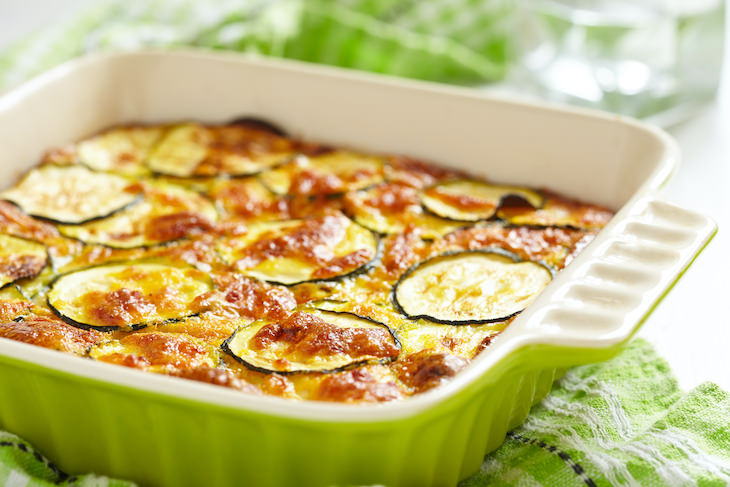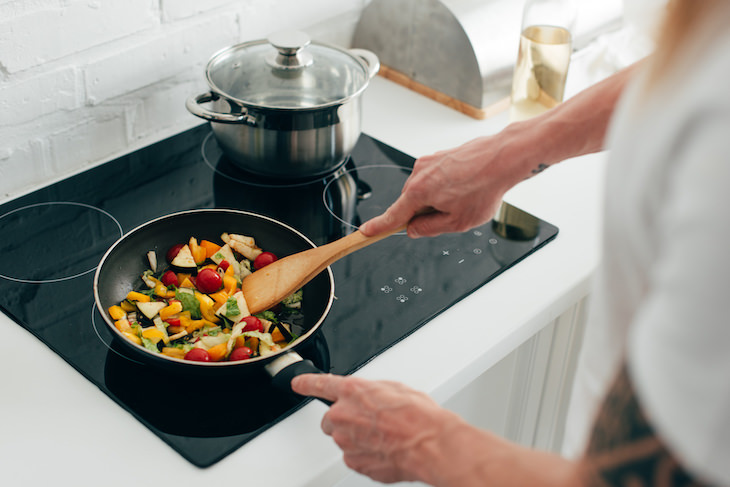
According to the Institute of Food Technologies, flavors can be enhanced overnight due to chemical reactions, which continue to take place after cooking and generate more, or new, flavor molecules in different ingredients. Oxidation, for example, occurs when foods come into contact with oxygen. Depending on the food and how it’s stored, oxidation could go both ways - it can turn the food mushy or rancid, like a sliced apple that turns brown, or it could alter the flavor for the better. Cooked onions, potatoes, and broccoli are a few examples of ingredients that will taste better after a night in the fridge.

In general, time and oxidation aren’t kind to many foods, and a lot of it comes down to personal preferences too. However, there are a few varieties that are generally considered to age well. Cruciferous vegetables like kale, broccoli, cauliflower and cabbage, and allium vegetables, including onions, leeks, and garlic, are good examples. These vegetables, which can taste bitter and harsh when raw or cooked lightly, contain an abundance of sulfur compounds. These compounds oxidize easily, taming the flavors and making them more mellow.
Starchy vegetables, like potatoes, may get a little sweeter over time too, because the starch slowly breaks down the sugars, or glucose, in them.
Related: 7 Great Sources of Sulfur and Their Health Benefits

Another group that may taste better with time is protein-rich foods like fish, poultry, and lean meats. When proteins break down they release amino acids such as glutamate, which enhance savory flavor, or those known as umami.
If you don’t like your food very spicy, you might be happy to know that the flavor of peppers becomes more delicate over time. The oxidation reduces the amount of the compound capsaicin in the peppers, which makes them less spicy. Other spices like turmeric black pepper and coriander are also sensitive to air and may lose their intensity over time.
When it comes to reheating, it all depends on how you do it. The reheating process can liberate some of the flavor molecules that may be trapped in fats or inside starch. “While it's the easiest, avoid the microwave," advises chef Nick Evans. "It's a killer to flavor,” he told Eat This Not That. The best way to reheat food is gently, either in a skillet or over low heat.
Still, there are some dishes that do not react to reheating as well as others. Some of the big no-nos according to culinary experts are shellfish and hamburgers. For the latter, it’s largely about the texture. In a good burger, there is a contrast between the crisp exterior and the softer rarer interior. After being refrigerated, however, a burger tends to take on a pebbly gray consistency and color, which can’t be undone.

In general, the foods that will best stand reheating are liquid-based ones - soups, stews, and casseroles. The liquids prevent the dish from drying out and creates fewer textural changes. Moreover, the above-mentioned dishes tend to include ingredients like onions, garlic, and spices, which make them appetizing the next day.
The bottom line is, don’t shy away from leftovers! Knowing the basics behind food aging can be really helpful when you want to meal-prep and try to decide on a dish that will last longer.
Share these tips with others!